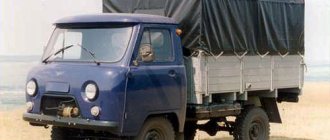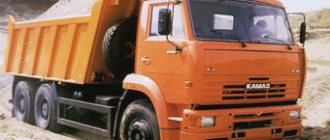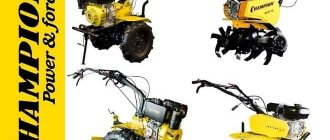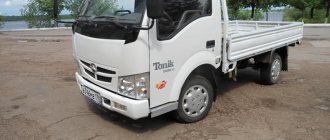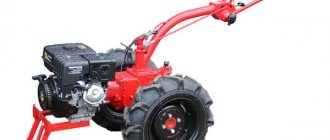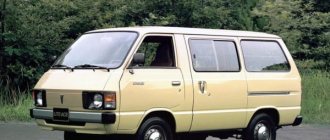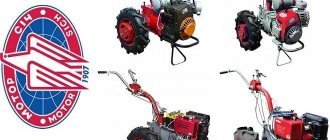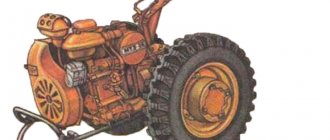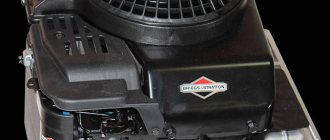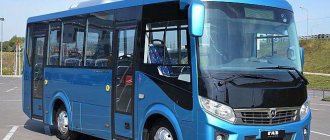Home Brands FAW FAW 1031
The FAW CA 1031 light-duty truck flew into the segment, “destroying” many of its competitors. In 2007, it was recognized as the best commercial light vehicle of the year. The car is still relevant today, it is found on the roads of large cities, where it carries up to 1380 kg of maximum weight.
The appearance is identical to the manufacturer's truck line. Straight forms are used, there are few details that distinguish the car from its competitors. The front end has large halogen optics with a plastic radiator grille in the center. The small bumper is not always painted in body color; foglights are an option.
On the side of the cabin there is a flat door, opening which reveals a step for boarding. At the rear there is a platform that can be replaced with a van. Platform length – 3100 mm, width – no more than 1612 mm, height – 400 mm.
FAW CA 1031 has the following dimensions:
- length – 4753 mm;
- width – 1690 mm;
- height – 2081 mm;
- wheelbase – 2470 mm;
- ground clearance - 180 mm.
In the city it is convenient to maneuver due to the large turnout of the wheels, but the steering wheel itself has many turns from lock to lock, and there is no power steering.
Cabin
There is no quality inside, everything is done to reduce the price tag, so hard plastic and fabric covering materials are used here. There is little free space inside the CA 1031, only three seats. The seats are simple, the driver's seat is adjustable in length and backrest angle.
The two-spoke steering column is partly made of wood. The steering wheel cannot be adjusted - this is a minus (adjustment appeared later). The instrument panel is represented by large dial gauges with indicators of malfunctions of various components.
The center console of FAW CA 1031 is trimmed with wood-like plastic. At the top there is a standard cassette player without a radio. Below there are many buttons and plugs for installing the air conditioner. The stove is adjusted with classic clumsy knobs.
The gear selector is made of wood.
Specifications
| Engine model | CA4D32-09 |
| Engine displacement | 3168 cm³ |
| Number of cylinders | 4 rows |
| Number of valves | 8 |
| Maximum power | 90 hp at 3400 rpm |
| Maximum torque | 210 H*m at 1900 rpm |
| Fuel | Diesel |
| Environmental class | Euro 2 |
| Transmission | Mechanical CAS5 |
| Number of gears | 5 |
| Maximum speed | 90 km/h |
| Fuel consumption | 10 l |
| Volume of the tank | 100 l |
The truck is powered by a 3.2-liter CA4D32-09 diesel turbo engine. The output is 90 horsepower at 1900 engine speeds and 210 H*m at 2100 rpm. The performance is rather weak and the car is really hard to drive.
The engine is equipped with a Bosch injection system and intermediate cooling of the air entering the turbine. The pair is a 5-speed manual with a dry single-plate clutch, which transmits power to the rear drive axle.
The engine is reliable; according to reviews, it easily travels 300 thousand kilometers without serious malfunctions.
Both axles of the FAW CA 1031 are mounted on dependent leaf spring suspension with hydraulic shock absorbers. It made it possible to obtain a carrying capacity of 990 kg, but this is a passport figure; it can be exceeded up to 1.5 tons if necessary. This should not be done on a regular basis, but in some cases it is possible. There is little comfort, the seat is hard, unevenness is perfectly felt.
The van is stopped by a double-circuit hydraulic drum brake system.
ERSATZ ONE TON AT WORKERS' REQUESTS
Of course, even before this truck, the range of Chinese equipment supplied to our country included light vehicles. But the load capacity of 800 kg was really the limit for them, and the cars looked somehow frivolous, like a typical Asian minibus. To replace the Gazelle, which suddenly became “banned from entry,” something more serious was needed. This is how the FAW-1031 appeared with a declared payload capacity of one ton, converted from the “two-ton” FAW-1041. Of the greater, the lesser.
This experience, despite its apparent simplicity, is truly unique. At least, in the history of the Soviet automobile industry, I could not immediately recall such a case. The carrying capacity of the machines was constantly increasing. This did not always lead to positive results. Here the happy owners of some “improved” UAZ models with a carrying capacity of as much as 1030 kg will agree with me. That's why they're biting their elbows now! But enough about the sad things, because, as it turned out, turning a two-ton car into a one-ton one is very simple.
First of all, you need to remove the dual rear wheels. This will make the car look more “low-tonnage” and less teasing to the cops. And it doesn’t matter that even the mudguards on the car remained the same, designed for dual wheels, not to mention such slightly larger components as axles, cabin and engine. Visibility is maintained. What else can be done to reduce the vehicle’s carrying capacity in the eyes of traffic cops? Put a smaller body. Not twice, of course, but just a little.
“Well, still, something else needs to be done! Two differences are almost nothing, no one will believe us!” – this is probably how the chief designer of Chinese cars scolded his subordinates. They thought for a long time and decided to remove the van’s steps on the “ton” version; anyway, the loading height with the introduction of small single rear wheels dropped significantly. What happened in the end?
The most important issue is weight. If previously 3500 kg of total weight of the FAW-1041 vehicle accounted for 2 tons of cargo, then the FAW-1031 has a worse figure. The total weight is 3170 kg, and the load capacity is 990 kg. Despite some lightening of the design, the weight of the empty vehicle has increased? Most likely, the fact is that if you load two tons on the FAW-1041, you may not meet the 3500 kg of total weight that is cherished for some underdeveloped citizens, so they cheat a little with the technical characteristics, especially since all the data on these cars is on the site It’s difficult to call them official; they can only be found in the PTS.
But the weight issue is also important to us from the point of view of economic efficiency. The empty weight of a vehicle with a carrying capacity of one ton or two is approximately the same. Consequently, in a “small” car we have a very high indicator such as the ratio of the mass of the equipped car to the mass of the cargo being transported. Will she justify herself? After all, on a less heavy-duty vehicle you can have lighter and faster axles, a gearbox, and you can also tinker with the suspension for better handling. Weight and fuel consumption decrease, speed increases. This is in theory. But in practice, in terms of consumer properties, this car should be compared with the gasoline Sobol, which is what buyers do. Porter is not a competitor for FAW-1031 due to its higher price.
AS A BUYER
“Hello, the cars are around the corner, choose a color, the driver will come and show you everything.” This is how I was greeted at the Irito car dealership, where they sell Chinese cars. While I'm getting acquainted with the cars from the outside. There are one- and two-ton cars in the same row. You already know about the main difference between these two cars - single- and dual-pitch tires on the rear axle. We can only add that on the “big” “Chinese” its pattern is suitable only for summer asphalt, while the “one-color” tires can be used all-season, as it should be on real trucks.
The cars now have more or less normal collision protection in the form of bars on the sides and rear, and the headache of all owners of Asian cars has disappeared - now the battery is quite difficult to steal. By the way, there is only one here - the car network voltage is 12 volts. Not long ago I became closely acquainted with the new GAZ-3308. What kind of “snot” was there! In one place, between the cabin and the body of the car, gasoline lines to the engine, thin plastic tubes for supplying diesel fuel to the autonomous heater, and electrical wires were intertwined. There are no snot in the “Chinese”. The only questionable place is the connection between the muffler and the exhaust pipe. But the van installers let us down. The ladders for its fastening have already begun to move apart, and the spacer board goes somewhere under the cabin and does not sit tightly in places.
But enough beating around the bush, the long-awaited keys have arrived. Is it time to go? First, a little technical inspection. The car comes with a bag of wrenches, a frail two-ton jack (of course, he can lift the car, but he’s afraid to leave the car on it, you need to put something under it), a “balloon with mounting”, a filter remover and mats. Due to their perishable nature, you will have to buy a first aid kit and fire extinguisher yourself. The book is only in Chinese, although if you buy a car they promise to give it in Russian.
Let's believe it. I pull the handle on the outside, another one in the depths, and you can raise the cabin. Four-cylinder diesel engine with 90 horsepower. The oil dipstick is not located in the front trim; to carry out daily maintenance, the cabin will have to be raised every morning, especially since you still need to monitor the oil levels in the power steering and antifreeze. There is nothing labor-intensive about lifting the cab, except that if you do it too often in one place, your neighbors in the parking lot may realize that you don't have it locked. Throw it back and take what you want. The car has a regular mechanical injection pump, even its muffler is simple, mechanical. The cable is routed into the cabin. Another feature of the injection pump is its own lubrication system, separate from the engine. Remember how it was on the old MAZs? I discovered the oil dipstick on the fuel injection pump quite by accident. Be careful, not all sellers are aware of this, see for yourself. The only small “blunder” of the fuel system is the plastic “return” from the injectors. I’m trying to bleed the pump, but my guide waves his hand: come on, don’t. Our car sat for 4 weeks, the mass did not turn off, the battery was slightly weak, however, after the first two or three not very confident and fast revolutions of the starter, the car started. You can close the cabin, adjust the mirrors and drive away.
The gear shift pattern of the five-speed box is “inverted” here. If you pull the lever back from neutral, it will be second, forward – third. To the right and back - fourth gear, and so on. During the half-hour trip, I mixed up the gears only once - instead of fourth, I stuck the second one, so the inverted pattern is not a hindrance to driving. I always started in second, slightly adding gas, but then it turned out that the transmission was very slow. For example, third gear ends at thirty. Although it may not end, the engine just roars so much that you feel sorry for it.
At first I tried to drive in my usual city manner - intense acceleration at the beginning of the segment between two intersections, then a long “roll up” until the next traffic light. Did not work out. The car does not roll up at all, and the speed drops very quickly. So fast that you don’t even have to slow down before turning. Whether this is the result of a missing van fairing or poor brake adjustment is difficult to say. But we can say about the brakes that using them is not very convenient. No, my favorite “hydraulics” work very smoothly, and if necessary, they can stake the car. But the controls... Never, even when I was learning to drive, did I look at the pedals, but now I had to. When trying to brake, your foot constantly rests against the steering column, and “hit or miss” becomes a real lottery. Moreover, at first there is no effort on the brake pedal. And the handbrake is tricky, with a stretching “crutch”. In a parking lot, everything is clear, but when you try to move off it on a hill, you immediately forget which way you need to turn the handle of the crutch to release it.
But I liked the steering. Unlike the weightless “Sobolev” steering wheel, little effort is required here. Just what you need. When driving on asphalt, despite the real cargo axle in front and the leaf spring suspension, the smoothness of the ride turned out to be very good, probably due to the large mass of the car. Maneuverability is better than in a passenger car. I would not have driven a Volga into some of the places that FAW squeezed into, much less on a lawn. Only at the very end of the road, when I had to drive the car into the parking lot, I disgraced myself and stood up, although there was about a meter and a half of free space in front. I didn’t see them from my “workplace”. This means that, despite the “cargo” landing, there is also a dead zone in the front.
What do we have as a result? As I already said, the only competitor to the “Chinese” in price is “Sobol”. The power of its gasoline engine is excessive for delivery work around the city, and 90 Chinese diesel “horses” are what is needed for a little over three tons of mass. In combination with a short transmission, they confidently accelerate the car in the city. But on the highway, unlike the Sobol, this thing will roar loudly, and there is no cross-country ability here. In general, it’s better not to go to the far Moscow region on the FAW-1031, it’s not his thing. But all sorts of stalls and shops there are what you need. Here the “Chinese” is in his element.
According to subjective sensations, visibility and maneuverability here are slightly better than “sable” ones, and the capacity of the body is even more so. But the most important thing is that, unlike one-ton vehicles obtained either by converting passenger cars (“Burlak”), or created using their components and assemblies (“Sobol”), the “Chinese” is a real truck, and it is quite possible to overload it without fear, which is what the sellers suggest doing. But they don’t issue spare licenses...
Share
Price CA 1031
Sales have been completely stopped, so you can only buy it on the used market. The average price tag is 300,000 rubles, it all depends on the condition. The price is low, which is why there are so many sales on the Russian market.
In the database the car was equipped with:
- radio;
- stove;
- fabric covering;
- adjustable seat;
- PTF.
The equipment differed depending on the year of manufacture. In some versions of the FAW 1031, power steering was included in the base, but recently it has become an option. An awning, gates for the awning, and battery protection are also installed for a fee.
Reviews of FAW 1031 Rating: 3.9 out of 5 9 reviews found
14.01.2015
I became the proud owner of a FAV in 2008 and since then it has covered about 150 thousand km - no problems, and it starts at half a click in any frost without any boilers or preparation, but... firstly, you need to take a balanced approach to choosing a car! For example, professionals explained to me (by the way, one assembled this car at KrAZ at one time) that you only need to take the 2.7TD engine (this is a direct descendant of Cummins and Isuzu) which is generally indestructible and in no case a 3.2 simple diesel engine, raw Chinese, and what’s more and with plug-in wet liners, similar to the Moskvich, whose valves become dry on the go and much more! I only use high-quality semi-synthetics and I don’t neglect replacing ALL filters ON TIME, and I don’t spin the engine above 70-80 km/h; for those who fly more constantly, I’m sure this won’t add resource, but will reduce it by half, if not more! Hence, by the way, a more or less acceptable level of comfort.
Next - so that the turbine does not kill itself, if you do not know how to use turbocharged diesel engines - install a turbo timer and you will be happy! The gearbox of this car has become the talk of the town, but I have never had any problems with it - again: high-quality oil plus gentle handling and the exclusion of using fifth gear at ultra-low speeds, the speed must be at least 60 km/h, otherwise there will be inevitable overload and breakdown . There were never any questions about the other systems - the Tashkent stove, and besides, the cabin was insulated and noise-free: it’s worth it! Then I installed ordinary blinds in front of the radiator from an ordinary Moskvich - it’s a blast! For a HARD winter, you can safely remove the fan or put it in extreme conditions with a smaller size and number of blades. On the fuel line, before the frosts, I immediately threw out all the original oak plastic hoses (the main reason for airing and refusal to start in the cold) and installed ordinary two-layer elastic rubber gas-oil-resistant hoses - there were never any failures! For the chassis, I installed all the bushings in polyurethane (available for sale, the price is reasonable) and FORGOT about them, I tighten the king pin on time, I don’t neglect maintenance - that’s actually the whole secret of reliability. And you don’t need to drive a completely normal, reliable and high-quality car. Those who drove the Soviet automobile industry and Gazelles will definitely understand me. Believe me, I have a lot of experience and experience (over 30 years, all categories), the car is OWN and I have something to compare it with (I’ve owned it for six years). Good luck to everyone on the roads! I will be glad to share information of interest in terms of operation and maintenance.
